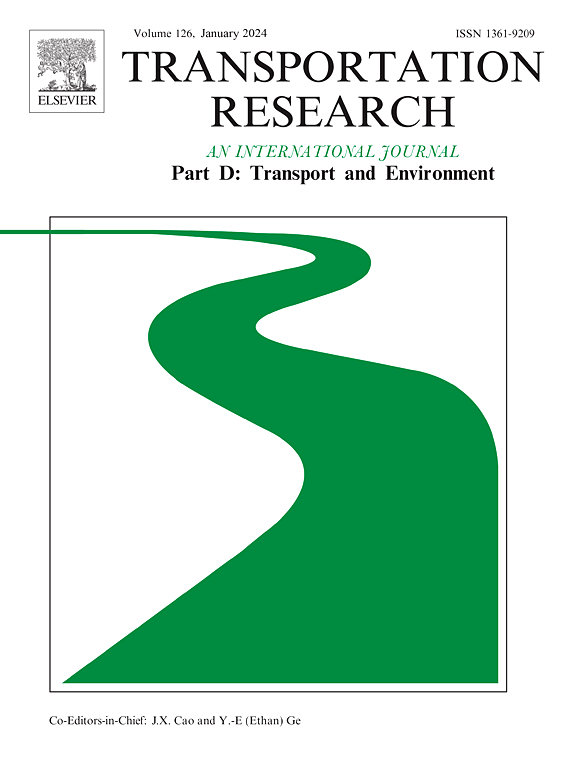伦敦超低排放区扩张对人类流动性的空间异质性响应
IF 7.3
1区 工程技术
Q1 ENVIRONMENTAL STUDIES
Transportation Research Part D-transport and Environment
Pub Date : 2025-05-27
DOI:10.1016/j.trd.2025.104810
引用次数: 0
摘要
超低排放区(ULEZ)旨在通过限制污染车辆来改善空气质量。虽然之前的相关研究侧重于空气质量和车辆数量,但其对人类流动性和社会空间不平等的影响仍未得到充分探讨。本研究通过使用扩展的中断时间序列(ITS)模型和大规模匿名移动应用程序数据量化对人类流动性的因果影响,解决了这一差距。我们观察到最初的突然下降,随后在4-8周内所有区域的旅行逐渐恢复。总的来说,较长的出行距离和通勤时间的变化表明出行速度变慢,向可持续交通的转变。然而,不同地理区域和社会人口群体的影响差异很大。由于对汽车的依赖,伦敦外围的变化最为剧烈,并对周边地区产生了空间溢出效应。这些结果突出表明,需要制定有针对性的政策,以确保向可持续城市交通的公平过渡。本文章由计算机程序翻译,如有差异,请以英文原文为准。
Spatial heterogeneity in human mobility responses to London’s ultra-low emission zone expansion
The Ultra Low Emission Zone (ULEZ) aims to improve air quality by restricting polluting vehicles. While previous relevant research focused on air quality and vehicle counts, its impact on human mobility and socio-spatial inequalities remains underexplored. This study addresses this gap by quantifying the causal impact on human mobility using an extended Interrupted Time Series (ITS) model and large-scale anonymised mobile app data. We observed an initial sudden decrease, followed by a gradual recovery of travel in only 4–8 weeks across all zones. Overall, the change of longer travel distances and commute durations suggests slower travel and a shift to sustainable transport. However, the impact varied significantly across geographical areas and socio-demographic groups. Outer London experienced the most abrupt changes due to car dependence, with spatial spillover effects to surrounding areas. These results highlight the need for targeted policies to ensure an equitable transition to sustainable urban transport.
求助全文
通过发布文献求助,成功后即可免费获取论文全文。
去求助
来源期刊
CiteScore
14.40
自引率
9.20%
发文量
314
审稿时长
39 days
期刊介绍:
Transportation Research Part D: Transport and Environment focuses on original research exploring the environmental impacts of transportation, policy responses to these impacts, and their implications for transportation system design, planning, and management. The journal comprehensively covers the interaction between transportation and the environment, ranging from local effects on specific geographical areas to global implications such as natural resource depletion and atmospheric pollution.
We welcome research papers across all transportation modes, including maritime, air, and land transportation, assessing their environmental impacts broadly. Papers addressing both mobile aspects and transportation infrastructure are considered. The journal prioritizes empirical findings and policy responses of regulatory, planning, technical, or fiscal nature. Articles are policy-driven, accessible, and applicable to readers from diverse disciplines, emphasizing relevance and practicality. We encourage interdisciplinary submissions and welcome contributions from economically developing and advanced countries alike, reflecting our international orientation.

 求助内容:
求助内容: 应助结果提醒方式:
应助结果提醒方式:


